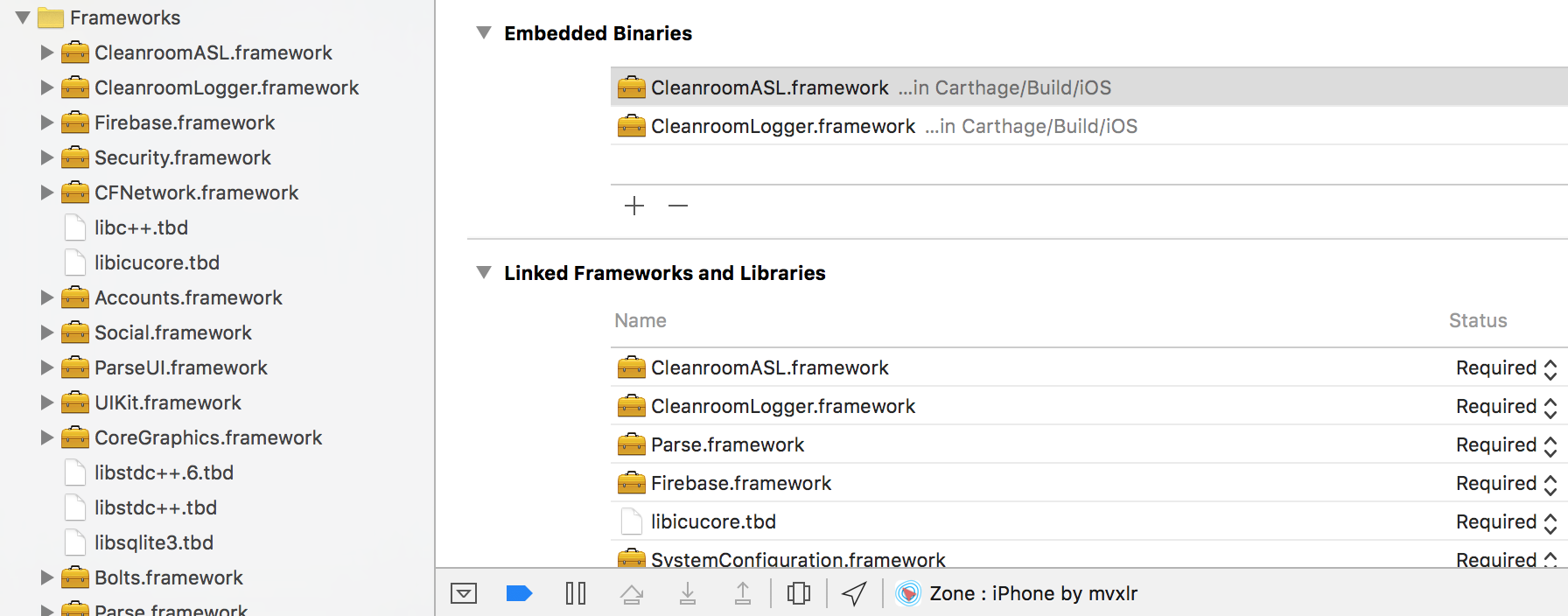When using external framework Xcode now has an Embedded Binaries as well as Linked Frameworks section.
When you download an external framework and Finder->drag it into Xcode, it will place the framework into the Linked Frameworks and Libraries section.
When you build a library with Carthage it recommends dragging into the Embedded Binaries section.
Both seem to be working in terms of linkage, as the API becomes available either way, further more when adding a framework into the Embedded Binaries section is it also automatically gets added into the Linked Frameworks and Libraries section.
So, who is right? Carthage or the rest of the internet? and why are there 2 options for including external resources into Xcode projects?

